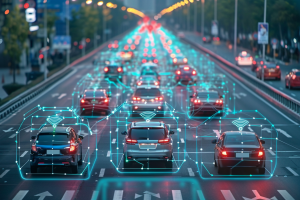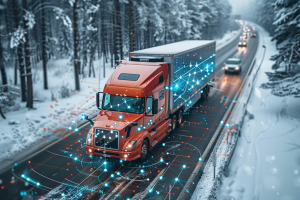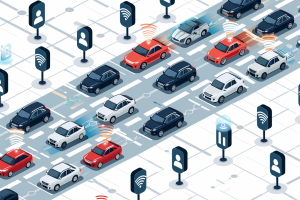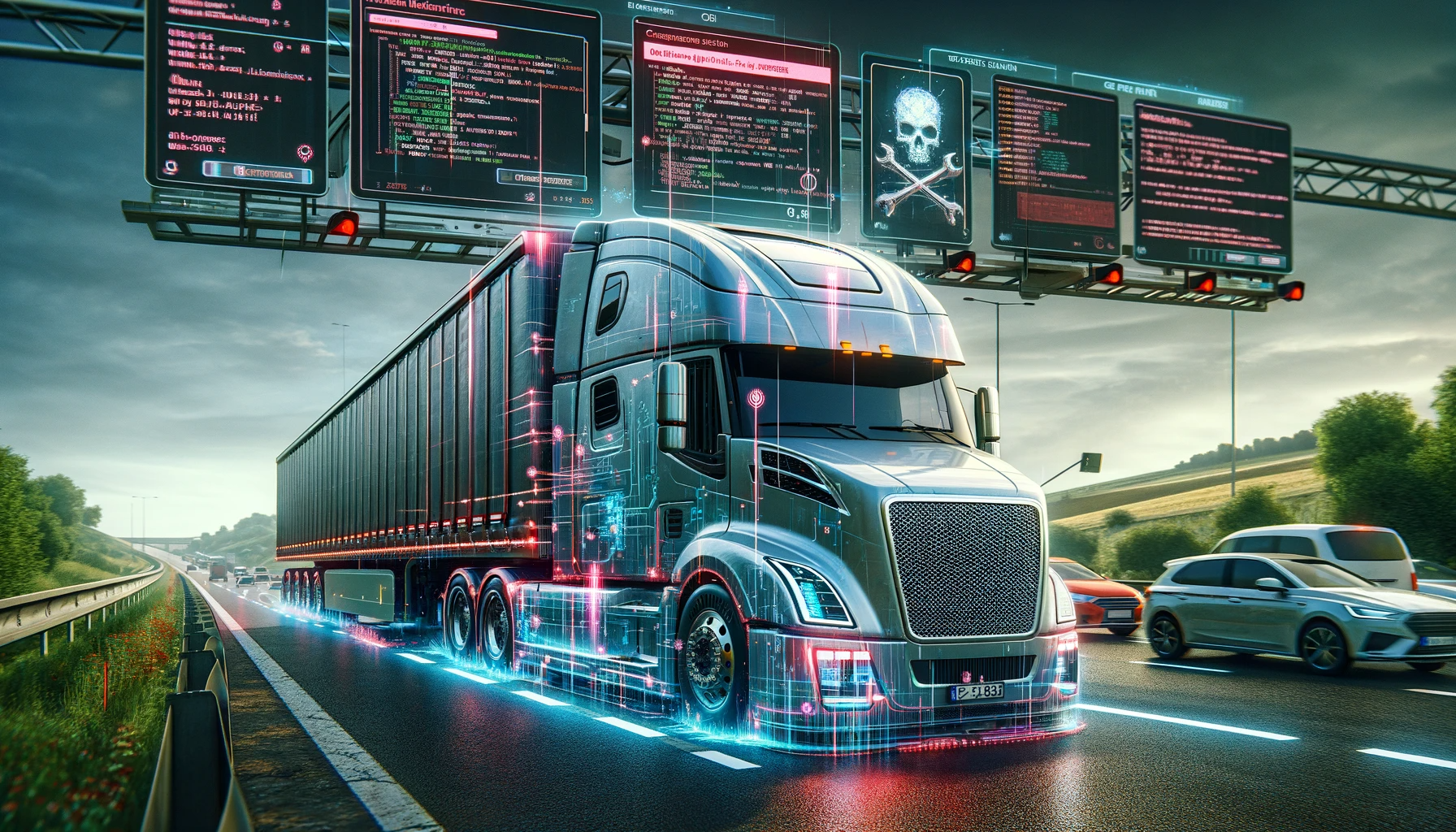- Exploring the Frontier of Auto Security: Discover how the U.S. Commerce Department’s proposed rule-making could redefine the security standards for U.S. connected vehicle regulations, potentially reshaping the industry.
- The Intersection of Technology and Policy: Learn about the strategic steps the U.S. is taking to mitigate risks associated with foreign technology in connected vehicles—a key initiative under ongoing national security strategies.
- Innovation Amidst Regulation: See how federal incentives like the $40 million grant for V2X technologies are driving advancements in vehicle communication systems, setting new standards for road safety and efficiency.

Navigating the intersection of technology and policy, U.S. connected vehicle regulations aim to safeguard against global threats.
Amid heightened national security concerns, the U.S. Commerce Department is intensively reviewing the security implications of connected vehicles equipped with foreign-sourced technology. This scrutiny is part of a broader initiative to ensure that U.S. connected vehicle regulations adequately safeguard against technological threats posed by adversarial nations.
Understanding the U.S. Connected Vehicle Regulation Initiative
The Commerce Department, spearheaded by its Bureau of Industry and Security (BIS), has initiated an advanced notice of proposed rule-making to address potential national security risks associated with U.S. connected vehicle regulation. The focus is on establishing a definition of connected vehicles that is broad enough to encompass autonomous and electric vehicles, especially those that might incorporate technology from countries posing potential threats, such as China, Iran, North Korea, and Russia. To learn more about the latest advancements in Autonomous Trucks, check out this page. For more on strategies in Electric Trucks integration, explore this link.
The Scope and Definition of Connected Vehicles
Inclusion of Diverse Technologies

Advanced notice of proposed rule-making—defining the future of automotive security in the U.S.
According to the BIS, a connected vehicle is defined as an automotive vehicle integrating networked hardware with automotive software systems to communicate through various channels such as dedicated short-range communication, cellular telecommunications, and satellite communication. This encompasses not only vehicles equipped with global navigation satellite systems, remote access, and wireless software updates but also those with on-device roadside assistance, enhancing both functionality and safety. Learn more about the role of Telematics in Transportation Technology.
Enjoying our insights?
Subscribe to our newsletter to keep up with the latest industry trends and developments.
Stay InformedPotential Impact on Foreign Technologies
The BIS’s definition aims to potentially restrict certain foreign products and manufacturers, focusing on those associated with adversarial nations. The initiative stems from concerns over the exploitation of security vulnerabilities that could directly impact U.S. national security, prompting a reevaluation of how foreign technologies are integrated into U.S. transportation networks.
Data Privacy and Security Concerns in Connected Vehicles
Data Collection and Surveillance Risks
The advanced capabilities of connected vehicles allow for the collection of extensive data sets, including biometric information and environmental data, which could be accessed by foreign entities. Features such as driver-facing cameras and the ability for remote operators to control vehicles remotely are of particular concern due to the potential for significant privacy and security breaches.
From autonomous to electric, connected vehicles encompass a new era of transportation technology.
For additional insights into ongoing developments in Cybersecurity, explore this page.
Steps Toward Mitigating Risks
The Commerce Department is considering not only restrictions but also pathways for exemptions for businesses that demonstrate robust security measures to mitigate these risks. This balanced approach seeks to encourage innovation while protecting national security interests.
The Legislative and Regulatory Framework

Potential restrictions on foreign technologies reflect a proactive stance against security vulnerabilities.
Following an executive order from the Trump administration, which has been carried forward by the Biden administration, the regulatory efforts on U.S. connected vehicle regulation highlight a consistent federal focus on protecting digital networks from external threats. Stay updated on legislative updates on vehicle connectivity by visiting this link.
Stakeholder Input and Future Regulations
The Commerce Department is engaging with stakeholders to refine the proposed regulations, ensuring a collaborative approach that balances innovation with security. The ongoing public comment period is critical for incorporating industry insights and concerns into the final regulatory framework (U.S. Department of Commerce).
Potential for New Terminology

Innovation meets regulation: Striking a balance to encourage progress while ensuring security.
The term “connected vehicle” is under review, with potential new terminologies such as “networked vehicles,” “intelligent connected vehicles,” “software-defined vehicles,” or “connected autonomous vehicles” being considered. These terms aim to more accurately reflect the evolving landscape of vehicle technology and ensure that regulations remain relevant and effective.
International Implications and Cooperation
The regulatory actions could significantly impact international trade and cooperation in vehicle manufacturing and technology development. The U.S. aims to lead in setting global standards for vehicle connectivity and security, influencing international policy and technological norms. To understand the impact of global trends on connected vehicle regulations, follow this link.
Advancing Road Safety and Connectivity Through Federal Initiatives

Every connected vehicle is a node in a network—securing them secures our national infrastructure.
In parallel to regulatory considerations, the U.S. Department of Transportation’s Federal Highway Administration (FHWA) is actively promoting the deployment of Vehicle-to-Everything (V2X) technologies. A recent $40 million grant opportunity aims to advance connected and interoperable vehicle technologies that enhance road safety, mobility, and efficiency. This initiative is a part of the broader National Roadway Safety Strategy, aiming to integrate advanced technology to reduce roadway fatalities and improve traffic management across the U.S. (highways.dot). Discover the latest opportunities in government support for transportation at Government Grants Initiatives.
Conclusion
The U.S. connected vehicle regulation initiative represents a strategic approach by the U.S. government to ensure that the integration of advanced vehicular technologies aligns with national security objectives. As the regulatory landscape evolves, ongoing updates and stakeholder engagement will be crucial to developing effective and forward-looking regulations. These efforts underscore the importance of national security in the age of automotive innovation, ensuring that advancements in vehicle technology enhance, rather than compromise, the safety and security of U.S. citizens. Discover more about the Federal Highway Administration’s initiatives by checking out this link.
Key Developments in U.S. Connected Vehicle Regulations
- Advance Notice of Proposed Rulemaking: The U.S. Department of Commerce is soliciting comments on how to address security concerns about connected vehicles with technologies from adversarial foreign nations. This step is crucial for forming future regulations that secure the automotive and tech industries.
- $40 Million V2X Technology Grant: The Federal Highway Administration’s new funding initiative aims to enhance vehicular communication systems, promoting safer and more efficient roads through advanced technology.
- Stakeholder Engagement and Feedback: Ongoing efforts to engage industry stakeholders ensure that the regulatory framework for connected vehicles is robust and reflects real-world needs and technological capabilities.
- Review and Potential Redefinition: The potential redefinition of “connected vehicle” to more accurately encompass modern technologies illustrates the administration’s proactive approach to adapting regulations to technological advancements.
Explore More on Connected Vehicle Regulations and Technologies
- Overview of Connected Vehicle Standards: Gain insights into the standards and protocols guiding the development and implementation of connected vehicle technologies. Learn more at Intelligent Transportation Systems – Joint Program Office.
- Cybersecurity in Transportation: Understand the importance of cybersecurity measures in the development of connected vehicles to ensure user data protection and system integrity. Further details can be found on Transportation Research Board.
- Legal and Regulatory Information: Stay informed about the latest regulations that impact the connected vehicle industry, including privacy concerns and international cooperation in vehicle technology. Check out U.S. Department of Transportation for comprehensive resources.





















